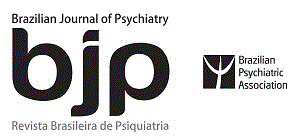Resumo em Inglês:
Objective: To assess differences in blood inflammatory cytokines between people with alcohol use disorder (AUD) and healthy controls (HC). Methods: Searches were performed from inception through April 14, 2021. Meta-analyses with random-effects models were used to calculate the standardized mean difference ([SMD], 95%CI), and potential sources of heterogeneity were explored trough meta-regressions and subgroup analysis. Results: The meta-analysis included 23 studies on the following 14 cytokines: tumor necrosis factor (TNF)-α, IL-1, IL-1RA, IL-2, IL-4, IL-5, IL-6, IL-7, IL-8, IL-10, IL-13, IL15, interferon (IFN)-γ and sCD14. There were significantly higher concentrations of IL-6 (n=462 AUD and 408 HC; SMD = 0.523; 95%CI 0.136-0.909; p = 0.008) in AUD than HC. No significant differences were found in the other 13 cytokines. Conclusion: We found that IL-6 levels were significantly higher in individuals with AUD than HC and that other cytokines were not altered. This can be explained by the small number of studies, their methodological heterogeneity, and confounding factors (active use, abstinence, quantity, and physical or psychiatric illnesses, for example). Despite a great deal of evidence about alcohol and inflammatory diseases, studies assessing the role of neuroimmune signaling in the development and severity of AUD are still lacking.
